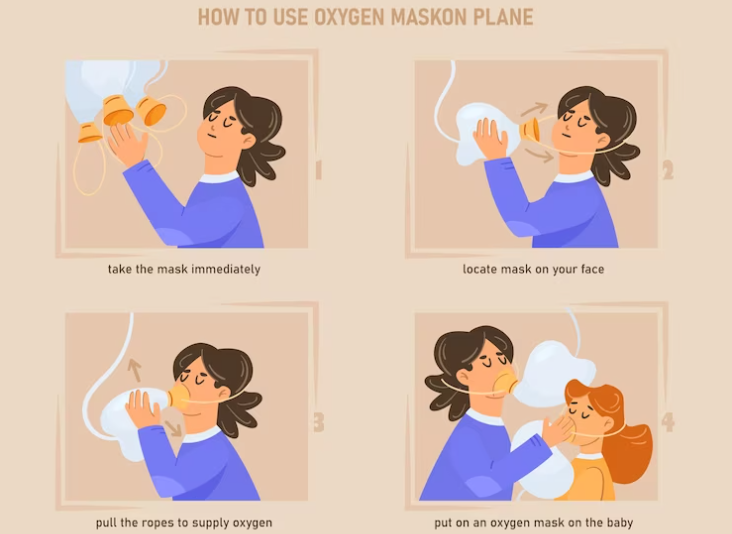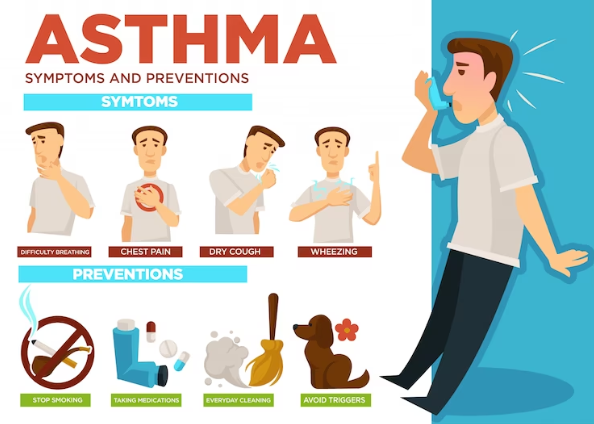Metered dose inhalers, dry powder inhalers and nebulizers are modes of aerosol drug delivery that are used to treat respiratory disorders such as Obstructive Lung Disorders, Asthma, Pulmonary Arterial Hypertension, Cystic Fibrosis and Infectious Pulmonary Disease. A spacer is an external device connected to an MDI, to enhance drug administration through improved actuation and inhalation coordination. To inquire about inhalers, contact Dr. Sheetu Singh, a knowledgeable and experienced healthcare professional specializing in respiratory care. She can offer you professional advice and suggestions that are suited to your unique needs.
What is a Metered Dose Inhaler?
Metered dose inhalers are tiny devices that propel a medicinal spray into the airways. Dry powder inhalers also administer medication, but the powdered medication needs to be inhaled deeply to reach the airways.
The advantages of MDIs is as follows:
- Multidose delivery capability
- Portability
- Lower risk of bacterial contamination
The disadvantages of MDIs are as follows:
- the necessity of coordinated actuation and inhalation
- Oropharyngeal drug deposition
What are Nebulizers?
Nebulizers are devices that convert liquid medications into a tiny mist that may be inhaled easily. They can be powered by batteries or electricity. A mouthpiece or facemask that is placed over the nose and mouth allows the mist to exit the machine through a tube. Children frequently utilize nebulizers as they don’t need to exert any effort to breathe the drug into their airways.
Nebulizers have the advantages listed below:
- Patients who are unable to employ alternative inhalation techniques should receive therapy
- Permit administering high amounts of medication
- Patient coordination is not required
The following are the disadvantages of Nebulizers:
- Higher cost
- Decreased portability
- Longer administration time and set-up
- A supply of compressed air or oxygen (a jet nebulizer) may be required
What are Spacers?
Spacers are canisters that attach to the mouthpieces of metered dose inhalers making the inhalers easier to use. Spacers make it easy for the user to use the inhaler and assist with the right dosage of the medication to be delivered.
What are Metered Dose Inhalers, Spacers and Nebulizers Used For?
Breathing diseases like asthma are typically treated with nebulizers, dry powder inhalers, and metered dose inhalers:
- Asthma
- Obstructive lung disease (also known as COPD, chronic obstructive pulmonary disease)
- Chronic bronchitis
- Emphysema
- Pulmonary Arterial hypertension
- Cystic fibrosis
- Infectious pulmonary disease
Aerosol drug delivery may also be used with some types of non-respiratory therapy. Inhalers can be used to administer medication for:
- Pain relief
- Diabetes
- Genetic diseases
- Thyroid disorders
What are Metered Dose Inhaler and Nebulizer Medications?
Metered dose inhaler medications include:-
- Beclomethasone Dipropionate (QVAR)
- Ventolin, Proventil, Ventolin HFA, Proventil HFA, and Proair HFA are variants of albuterol sulfate
- Cromolyn sodium (Intal)
- Ciclesonide (Alvesco)
- Flunisolide Hemihydrate (Aerospan HFA)
- Flunisolide (AeroBid, AeroBid-M)
- Fluticasone Propionate (Flovent HFA)
- pratropium Bromide/Albuterol Sulfate (Combivent Respimat)
- Mometasone/Formoterol (Dulera)
- Triamcinolone Acetonide (Azmacort)
Dry powder inhaler medications include:
- Budesonide (Pulmicort Flexhaler)
- budesonide/Formoterol HFA (Symbicort)
- Fluticasone propionate (Flovent Diskus)
- Formoterol Furmate (Foradil Aerolizer)
- Mometasone Furoate (Asmanex Twisthaler)
- Salmeterol Xinafoate (Serevent Diskus)
- Tiotropium Bromide (Spiriva Handihaler)
Nebulizer medications include:
- Albuterol Sulfate (Proventil, AccuNeb)
- Arformoterol Tartrate (Brovana)
- Budesonide (Pulmicort Respules)
- Formoterol Fumarate (Perforomist)
- Cromolyn Sodium (Intal)
- Ipratropium Bromide
- Levalbuterol Hydrochloride (Xopenex)
How Do You Use Metered Dose Inhalers, Spacers and Nebulizers?
The thorough method for employing a metered dose inhaler is:
- Take off the cap, then hold the inhaler vertically.
- Shake the inhaler
- Exhale gently for three to five seconds.
- Slowly take a breath through your mouth while releasing the medication by pressing the inhaler once.
- If possible, hold the breath for ten seconds to allow the medicine to reach deep into the lungs
- If more than 1 puff (actuation) is required, follow the procedure above again, pausing for at least a minute in between each actuation.
The general technique for using a spacer is:-
- Make sure the spacer is clean and put together properly by the manufacturer’s instructions.
- Shake the inhaler canister well to mix the medication
- Take it off the cap from the inhaler mouthpiece
- Insert the mouthpiece of the inhaler into the open end of the spacer. Make sure it fits tightly
- Breathe out fully to empty your lungs. This makes it more likely that the drug will be deeply inhaled into your lungs.
- To inhale medicine into the spacer, press down on the inhaler canister once.
- Start taking calm, deep breaths via your mouth once the drug has been released into the spacer. It ought to take 5-7 seconds to complete this.
- Remove the spacer from your mouth after taking the prescription, then hold your breath for ten seconds to help the medicine penetrate your lungs completely.
- Breath out gently and slowly
- After use, clean the spacer as per the manufacturer’s instructions and allow it to air dry.
An air compressor, nebulizer cup, mouthpiece or mask and medicine measuring equipment are all included in a nebulizer kit. The general method for using a nebulizer is:
- Put together the nebulizer kit and plug in the power source.
- Close the nebulizer cup after adding the prescribed dosage of medicine.
- The mouthpiece or mask should be attached to the top of the nebulizer cup.
- Connect the air compressor with the tubing at the nebulizer cup’s base.
- activate on the gas pressure source at the reservoir’s mouth.
- Inhale slowly through your mouth, occasionally taking deep breaths.
- Confirm that a mist is produced by turning the nebulizer on.
- If a mask is worn, make sure it is properly fastened.
- Breathe through the mouth for the duration of the therapy.
- If the nebulizer begins to splutter, turn it off.Contact Dr. Sheetu Singh


